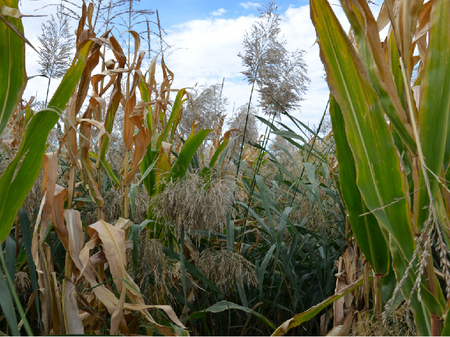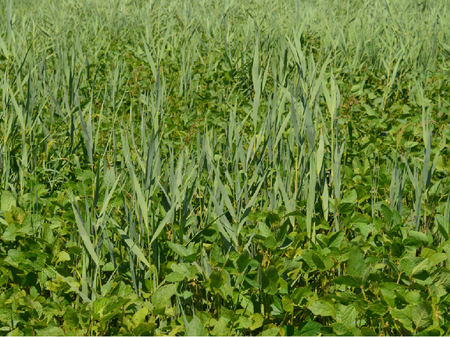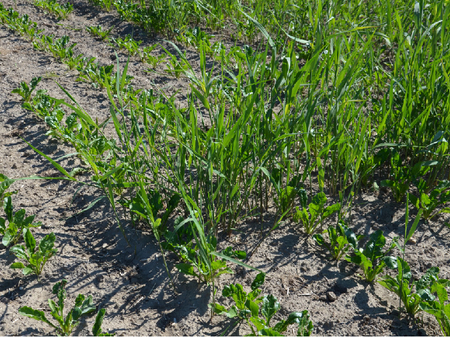Common reed
Phragmites australis [Cav.] Trin. ex Steud.
Distribution
The natural habitat of the reed is standing waters, but also wet meadows and riparian forests. The species is very adaptable and occurs on road embankments, in pavement cracks (!) or along railroad lines and even in fields. Essentially all crops such as corn, soybean, sugar beet and cereals are affected. Former meadows with reed beds in wetlands that have been converted to cropland are, of course, particularly affected. Once reed becomes established, it also colonizes drier sites such as hillsides.
Spread
Local spread of reed is based on the vegetative growth of rhizomes. Thus, the plant often grows from the edges into the fields. In addition, reed can spread through prostrate culms rooting at nodes. Reed is most likely carried from field to field via rhizome fragments. The role of seeds in colonizing cropland is difficult to assess.
Economic importance
The species reaches heights of 2 - 4 m on average and forms extensive, extremely dense stands, but mostly only partial areas of a field are affected. The competitive effect is enormous and therefore corresponding yield losses are to be expected.



Prevention and control
Control of reed canary is very difficult due to its low-lying rhizomes and high regenerative capacity. The choice of measures is limited and a sustainable success is not always given.
- Mechanical control can be done on the stubble or after harvest. The effect of repeated mechanical treatment measures is based on disruption of rhizome growth together with depletion of nutrient reserves and, above all, by working the rhizomes out to the soil surface with subsequent drying.
- The choice of suitable herbicides is very limited. The use of glyphosate-containing pesticides on the stubble so far provides the most consistent and also the longest lasting control of reed canary with suppression also in the following year.
Last updated: 11.12.2025
automatically translated